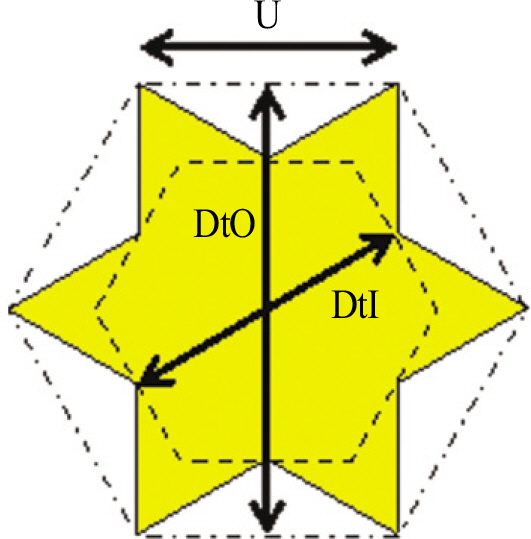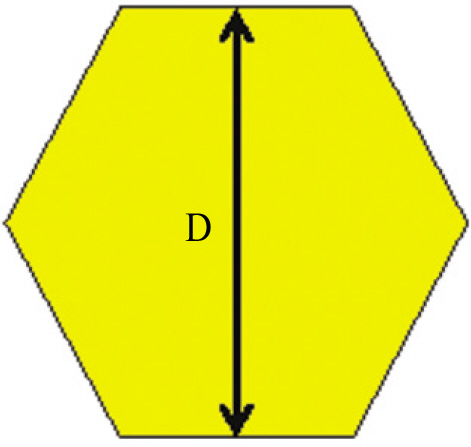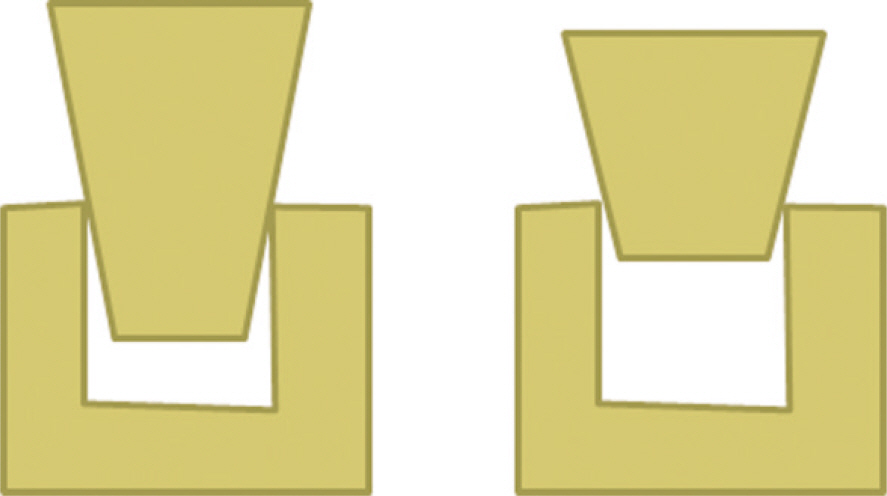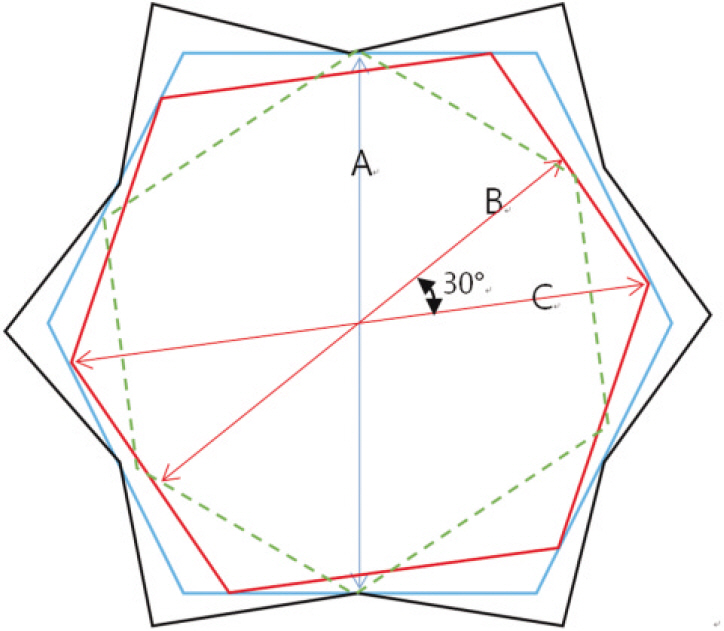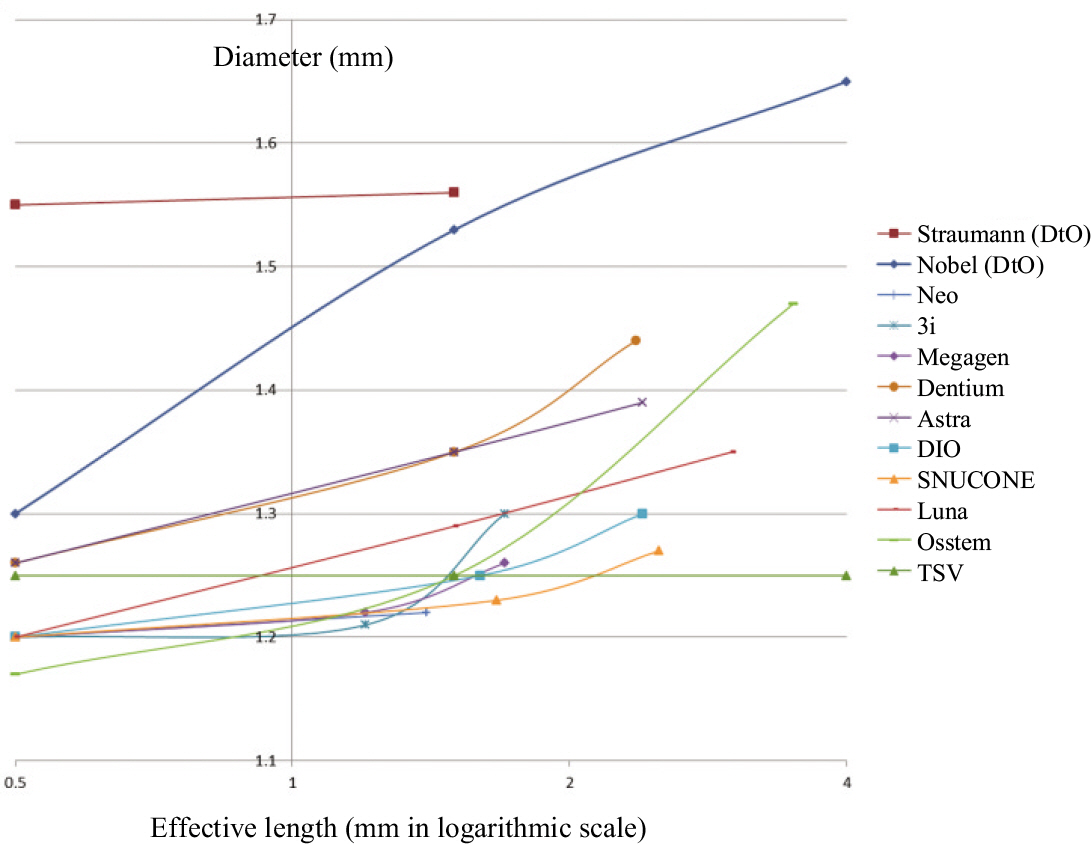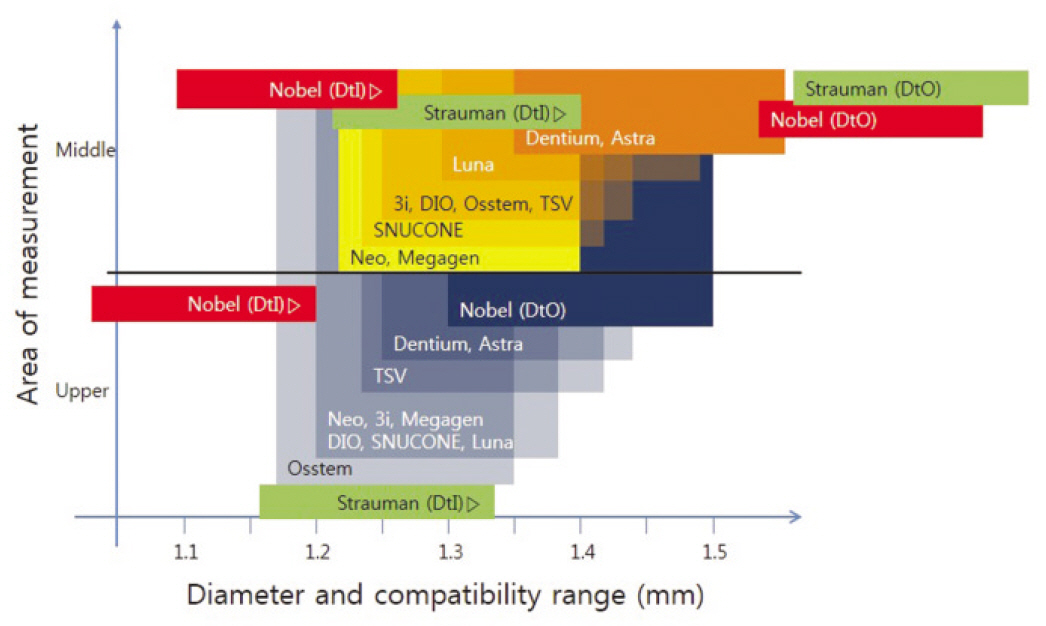J Korean Acad Prosthodont.
2014 Jan;52(1):34-41. 10.4047/jkap.2014.52.1.34.
A study on the compatibility of implant drivers
- Affiliations
-
- 1Department of Oral Health, Graduate School of Public Health & Social Welfare, Cheonan, Korea.
- 2Department of Prosthodontics, College of Dentistry, Dankook University, Cheonan, Korea. hyuk928@chol.com
- KMID: 2000145
- DOI: http://doi.org/10.4047/jkap.2014.52.1.34
Abstract
- PURPOSE
In this study, the diameter of each implant driver was measured and compared to find out the compatibility of implant drivers.
MATERIALS AND METHODS
Drivers from 12 implant systems being used in Dankook University Dental Hospital were included in this study. The shapes of the implant drivers were segregated, and the effective length and the diameter of upper, middle, lower part of driver tips were measured (n=10). The measured data were mathematically analyzed for its compatibility.
RESULTS
A driver with the smallest diameter (1.17 mm) had the highest compatibility at the upper part of driver tip. This driver could be used for a bigger driver up to 1.35 mm in diameter. There were several driver groups which had the same diameter so as to be interchangeable each other. In the middle part, the smallest diameter measured was 1.2 mm and this was able to replace a driver up to 1.40 mm diameter. Since the diameter generally became thicker from upper part (the tip of driver) to the lower part (the shank of driver), some drivers with bigger diameter at the upper part so which was failed to show any compatibility became compatible with a driver which had smaller diameter at the upper part but wider in the middle part. The compatibility of torx shape drivers were affected by the inner diameter of the drivers not only by the outer diameter. Furthermore, the inner diameter of torx drivers decided the compatibility between torx and hex drivers.
CONCLUSION
From the study it was found that compatibility in drivers existed among certain implant systems and to check its compatibility the diameter at a certain effective length should be measured. However, there has been not enough studies about long-term use of compatible drivers, so effects of using compatible drivers on drivers and implants are unknown. Therefore, usage in inevitable cases only is recommended and further study is needed.
Keyword
Figure
Reference
-
1.Bra�nemark PI. Osseointegration and its experimental back ground. J Prosthet Dent. 1983. 50:399–410.2.Pjetursson BE., Karoussis I., Bu¨rgin W., Bra¨gger U., Lang NP. Patients' satisfaction following Implant therapy. A 10-year prospective cohort study. Clin Oral Implants Res. 2005. 16:185–93.
Article3.Hoyer SA., Stanfod CM., Burabndham S., Fidrich T., Wagner J., Gratton D. Dynamic fatigue properties of the dental implant-abutment interface: joint opening in wide-diameter versus standard-diameter hex-type implants. J Prosthet Dent. 2001. 85:599–607.
Article4.Patterson EA., John RB. Theoretical analysis of the fatigue life of fixture screws in osseointegrated Dental implants. Int J Oral Maxillofac Implants. 1992. 7:26–33.5.Goodacre CJ., Bernal G., Rungcharassaeng K., Kan JY. Clinical complications with implants and implant prostheses. J Prosthet Dent. 2003. 90:121–32.
Article6.Ekeldt A., Carlsson GE., Bo¨rjesson G. Clinical evaluation of single-tooth restorations supported by osseointegrated implants: a retrospective study. Int J Oral Maxillofac Implants. 1994. 9:179–83.7.Andersson B., Odman P., Lindvall AM., Lithner B. Single-tooth restorations supported by osseointegrated implants: results and experiences from a prospective study after 2 to 3 years. Int J Oral Maxillofac Implants. 1995. 10:702–11.8.Jemt T., Pettersson P. A 3-year follow-up study on single implant treatment. J Dent. 1993. 21:203–8.
Article9.Jemt T., Laney WR., Harris D., Henry PJ., Krogh PH Jr., Polizzi G., Zarb GA., Herrmann I. Osseointegrated implants for single tooth replacement: a 1-year report from a multicenter prospective study, Int J Oral Maxillofac Implants. 1996. 29–36.10.Kim SK. The effects of the design of abutment screw driver on the amount of time for insertion of screw driver into abutment screw head. J Koean Acad Prosthodont. 2005. 43:258–63.
- Full Text Links
- Actions
-
Cited
- CITED
-
- Close
- Share
- Similar articles
-
- Accuracy of different electronic torque drivers: A comparative evaluation
- The effects of the design of abutment screw driver on the amount of time for insertion of screw driver into abutment screw head
- The change of rotational freedom following different insertion torques in three implant systems with implant driver
- Infection control of dental implant hand drivers using ethanol solution
- Effect of Co-Driver on Job Content and Depression of Truck Drivers



